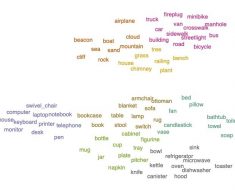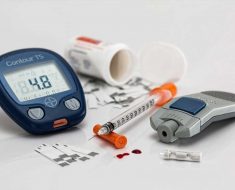College students seriously underestimate the effects of drinking a new class of beverages being marketed across the country, according to a new George Mason University study. “Supersized alcopops—sweet, colorful and fizzy drinks that have been shown to appeal to youth—now contain almost as much alcohol as a six-pack of beer in a single can, and young drinkers don’t know how much these drinks can affect them.
The new study, published in Alcoholism: Clinical and Experimental Research, randomized Mason students into two groups, and asked each group to estimate what their blood alcohol concentration (BAC) would be if they hypothetically consumed over the course of 2 hours 1, 2, or 3 cans of the product shown to them: an empty can of either supersized alcopop or of regular beer. They were also asked how many cans they could drink before it would be unsafe for them to drive.
Students estimating the effects of supersized alcohol consistently underestimated the impact of these high-alcohol beverages. While students tended to overestimate how drunk they would be from drinking beer, they consistently underestimated the level of intoxication they would reach by drinking the supersized alcopop. Researchers used information about students’ sex and weight to calculate their BACs at different levels of consumption for each product. Compared to those making estimates based on beer consumption, those estimating the effects of supersized alcopops had 7 times the odds of having a calculated BAC of 0.08 g/dL or higher before they thought it would be unsafe for them to drive.
“These new products constitute a unique danger to youth,” according to study lead Dr. Matthew Rossheim, an assistant professor of global and community health in Mason’s College of Health and Human Services. “Yet our findings clearly show that young people are not getting the message about how much they can be affected by them.”
The Federal Trade Commission has stated that consuming one can of supersized alcopop during a single occasion constitutes binge drinking and is therefore an unsafe practice. Youth have presented to emergency departments with BACs as high as 0.40 g/dL after consuming supersized alcopops—5 times the legal driving limit for adults. This potentially lethal dose of alcohol could be achieved by consuming just two supersized alcopops in two hours.
At the federal level and in most states, these products are classified as beer, which generally gives them a lower tax rate and availability in a wider array of stores than distilled spirits. In a companion commentary published on-line last month by The American Journal of Drug and Alcohol Abuse, Rossheim and colleagues calculated how much alcohol would actually have to come from a malt base in order for the products to reach their new alcohol level of 14%. “In order for supersized alcopops to be correctly classified as beer under current law, the beer base of these products would need to have an extraordinarily high alcohol-by-volume- at least 13% and likely much higher,” Rossheim said. “This appears to be unlikely given the much lower retail price per volume of supersized alcopops compared to beers with similar alcohol-by-volume.”
Flavored alcoholic beverages like these supersized alcopops have a history of non-compliance with laws defining beer as a category. The extremely high alcohol-by-volume and low price of supersized alcopops suggest that the new products are even more likely to be non-compliant with these laws.
This potential misclassification would result in manufacturers evading paying appropriate federal and state taxes. Moreover, it may be making large quantities of alcohol even more affordable and accessible to underage youth. According to Rossheim, “From a public safety perspective, it is urgently important that the Alcohol and Tobacco Tax and Trade Bureau assess the formulation of supersized alcopops to determine its correct legal classification.”
Alcohol continues to be the leading drug used by youth, and is responsible for 4,300 deaths each year of people under 21. It is second only to illicit/prescription drug use as the leading cause of death and disability among people aged 15 to 49, and causes 1 in 10 deaths of persons of working age.
Source: Read Full Article





